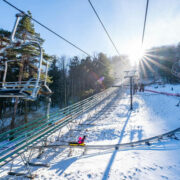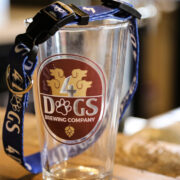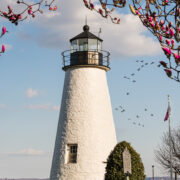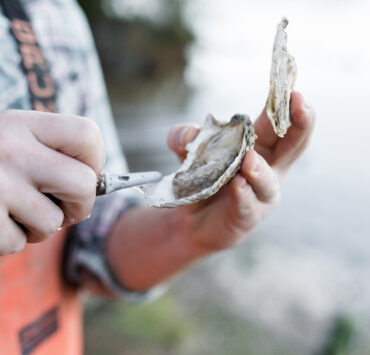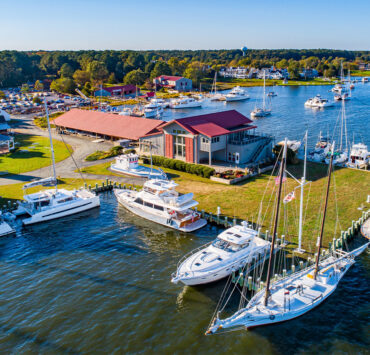Fly Fishing for Backcountry Brook Trout in Western Maryland

I cast my fly into the mountain stream. All was silent in the autumnal forest save for the mini waterfall that fed the living room-sized pool. As I dragged my fly (an inchworm pattern called a Green Weenie) across the water, a figure shot out from under floating leaves. My line went taut and the rod bent as the hooked fish swam furiously. I stripped in the line and lifted the rod to see what was at the other end. It was a brook trout.
I reached out my hand to grab it. Just as my fingertips grazed the fish, it wiggled, and the fly flung out of its mouth. I watched helplessly as it plopped into the water and swam back to its hideout.
I’d driven 150 miles that morning from my Montgomery County home and hiked up to this backcountry flow in Garrett County’s Savage River State Forest to catch a fish I wanted to catch for much of my life. I hoped to not have to drive home that evening disappointed.
I resumed fly fishing in the spring of 2020 after a two-decade hiatus. I initially took up the pastime in my youth growing up in the Midwest and spent many summer evenings fishing for bass and sunfish. But I longed to fish for trout after reading countless stories about the skill required to catch them by fly. And I aspired to catch one type in particular: the brook trout.

Unlike rainbow or brown trout, the brook trout is the only of its kind indigenous to the Eastern United States. As its name suggests, brook trout often live in mountain streams because they can only tolerate cold, clear, and oxygenated water. They’re referred to as a “canary in the coal mine,” because their presence, or lack thereof, reflects the health of an ecosystem. Because of pollution and development, the brook trout’s native range has been mostly limited to rural headwaters. They don’t grow particularly large — the state record fish is just 6 pounds — but fishermen pursue them for their vibrant markings, good flavor, and elusive nature.
I stopped fly fishing in my late teens without ever catching a trout. Twenty years later at the dawn of the pandemic, with my recreational opportunities limited to those that could be done outdoors and not around other people, I paid $25.50 for a Maryland fishing license and trout stamp and returned to the water. I found weekend mornings spent wading through a stream with a fly rod in hand to be an antidote to COVID news updates.
Once I was confident I could cast a fly line without whacking the back of my head, I set out to achieve the goal I had set so many years before and catch a brook trout. I was pleasantly surprised to discover that one of the nation’s finest brook trout havens was on public land in the Appalachian Mountains of western Maryland.
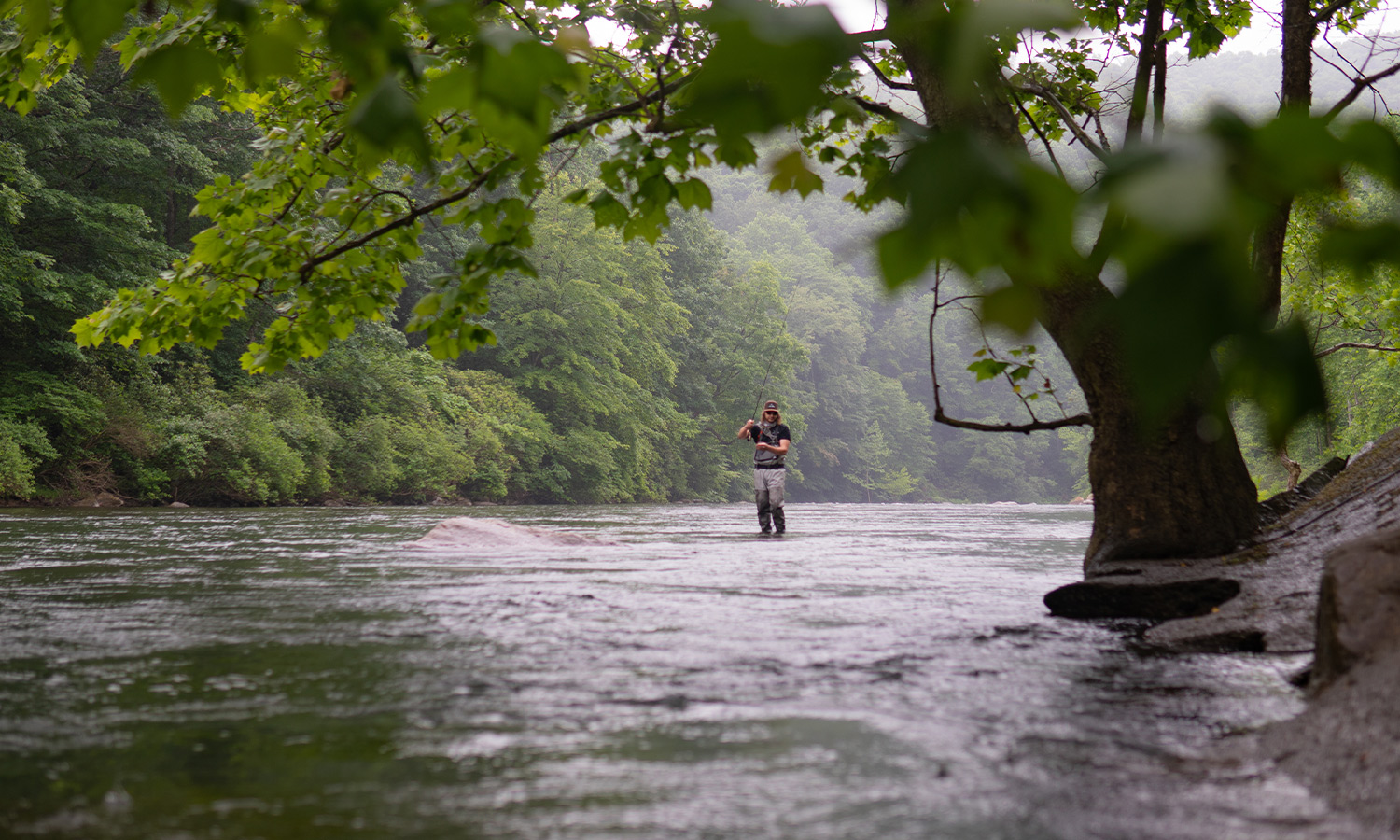
On an October Friday, I took off work and awoke before dawn to drive to the Savage River State Forest. It consists of about 55,000 acres of mountains interspersed with waterways. For fly fishers, the state forest is known for its proximity to the North Branch of the Potomac River and the Savage River, two of America’s 100 Best Trout Streams, according to Trout Unlimited.
The lower Savage River, a swift-moving tailwater that flows five miles from the Savage River Reservoir dam to the North Branch, is the only water in the state designated as a Trophy Trout Management Area to maintain its status as a preeminent fishing destination. The state’s oversight appears to be working because the river has not been stocked since 1991.
I planned to fish the reservoir’s smaller tributaries first and tackle the Savage River if time permitted. The lower Savage River may be loaded with big trout, but those fish are wily. I acknowledged the shortcomings of my fly fishing ability and knew my time was best served on smaller water. “It’s very technical along the lower Savage River just because of all the currents and structure,” said Mike Evans of Savage River Outfitters. “The other streams are pretty straightforward.”
But as I drove past a pedestrian bridge over the river, I decided to pull over and scout it out. I crossed the bridge and watched as a fly fisherman below me nymph fished in a deep pool and caught a foot-long brown trout. That was all I needed to see. I walked back to my car, tugged on my waders and boots, and rigged my rod. The successful fisherman was wading downstream by the time I returned to the bridge. I headed in the opposite direction, anticipating a triumphant catch.

The Savage River was as challenging as expected. The slick rocks and powerful flow made for treacherous wading in the 50-foot wide river, but I somehow remained dry. I cast streamers to the slower water behind large boulders in hopes of hooking one of the foot-long brook trout known to lurk in the river but gave up after a half-hour without a bite.
Back on the road, I reached the Savage River Reservoir, which was created in 1952 to serve as an emergency drinking water supply for Washington, D.C. Kayakers paddled the still, cyan-colored surface below me. Unlike nearby Deep Creek Lake, no gasoline motorized boats are permitted on the reservoir. The rocky shoreline and patches of coniferous trees recall the alpine lakes of the West. The reservoir is the centerpiece of what is regarded as the largest interconnected network of brook trout water in the Mid-Atlantic. The basin serves as a constant source of cool, deep water for fish when they need to retreat from the skinny tributaries during the summer.
My destination was the Middle Fork Crabtree Creek. No other cars were parked on a well-sized gravel shoulder near where the creek met the reservoir. A sign informed that only artificial lures could be used to fish, and no brook trout were allowed to be harvested. I followed a pair of tire tracks down the dirt road that ran parallel to the Middle Fork and into the wilderness.
As I hiked farther upstream, I became all too aware I was in prime black bear habitat. My eyes fixated ahead, expecting a furry mass to come into view at any moment. The sound of squirrels scurrying across the freshly fallen leaves sounded to me like firecrackers. I reminded myself that black bears don’t like noise and I could make a racket swinging my 7.5-foot-long fly rod. With my foolproof plan in place, my mind eased, and I focused on maneuvering over fallen logs and rocky outcroppings to find pockets of deeper water where trout might hold in the narrow creek.
After about half a mile, I came upon the aforementioned pool where I nearly landed the trout. Once I collected myself, I resumed casting and promptly hooked another brook trout. This time I used my net to secure the 6-inch long fish. What it lacked in size, it made up for in beauty. Its dark green back gave way to rhythmic green blotches and purple and pink dots on the sides. Its belly was light yellow and fins were rust orange. I quickly snapped a few photos before I delicately unhooked the fish and lowered it back into the water. As I watched the fish swim away, a smile crested over my face when I realized what just happened: I at long last had landed a brook trout.
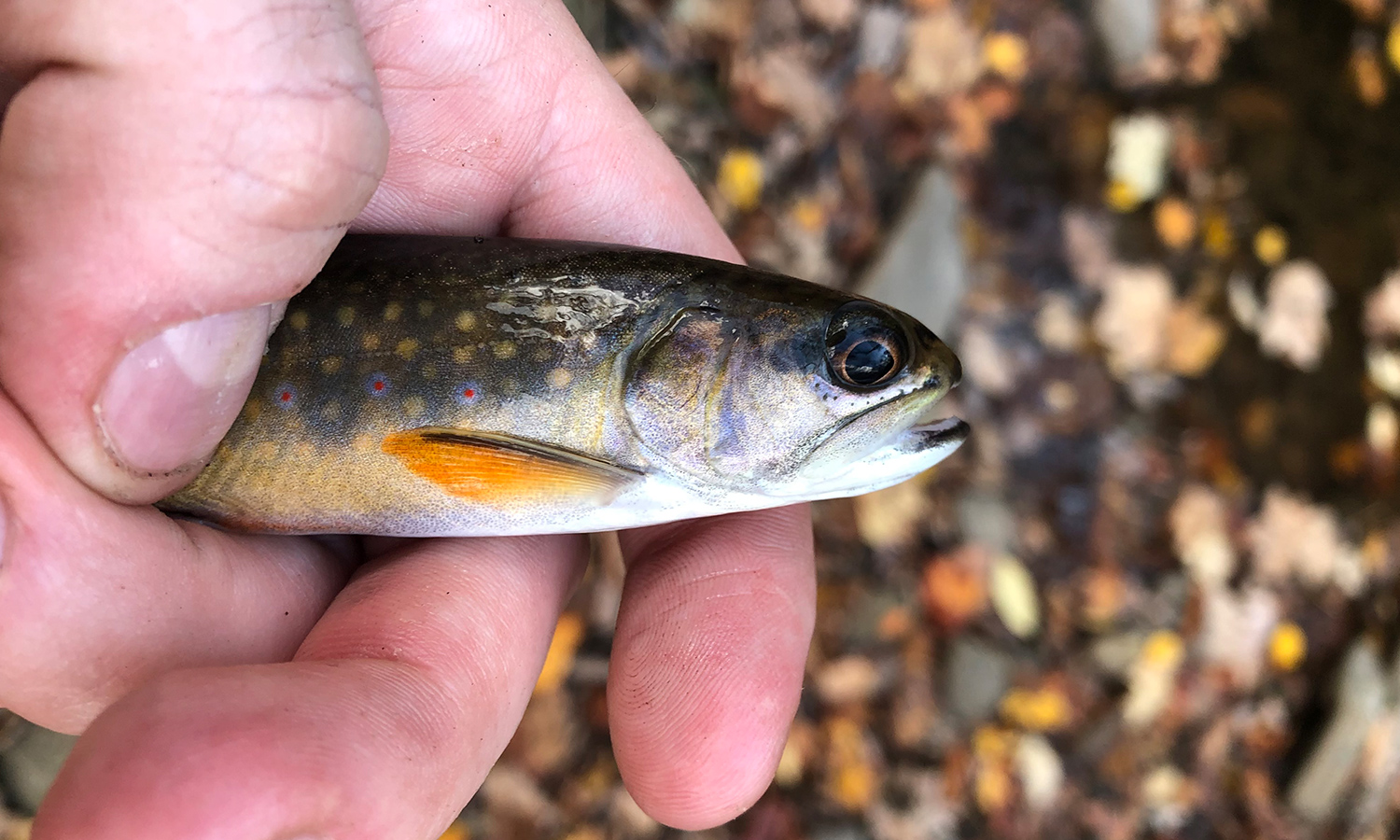
I caught another small one farther upstream before I reached several private property signs warning of the horrific things that would happen to me should I venture onto the land. I heeded the warnings, and I followed the tire tracks back to my vehicle, which was still alone along the side of the road.
Before returning home, I tried a few more streams that fed into the reservoir but failed to add to my catch total. Nonetheless, I was not disappointed. My goal was to at long last catch a brook trout, and I had caught some from one the most notable fisheries in the country in a sublime setting. Plus, I didn’t encounter any bears.
If you go
Savage River Outfitters is the source for fly fishing in the area. In addition to selling Orvis and TFO products, the shop also provides guide services and rents out three guest homes on the lower Savage River.
The fishing reports posted to its website are updated regularly and provide detailed information on water flows and successful fly patterns. Call Mike at 703-517-104 or Charlie at 301-707-1934 with any questions.
Lead Photo: Dylan Taillie
About the Author
Chris Berger
Chris Berger works as an urban planner and is fond of Maryland’s historic architecture, nature, and sporting traditions. He lives in Montgomery County with his wife, daughter, and dog. You canfollow him on Instagram @cjberger1.

